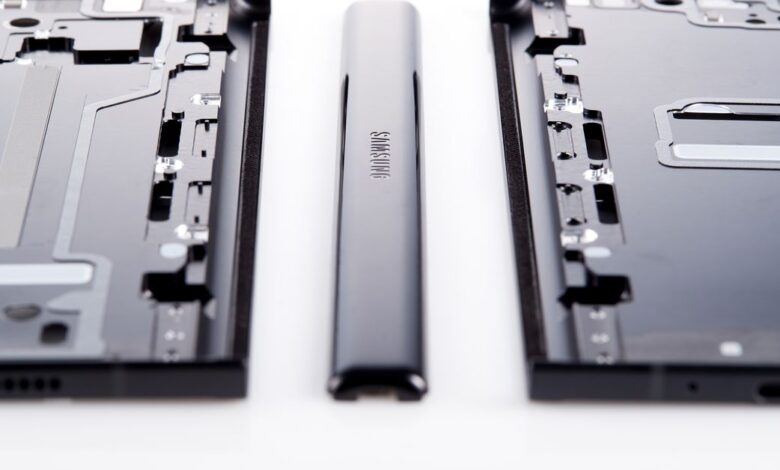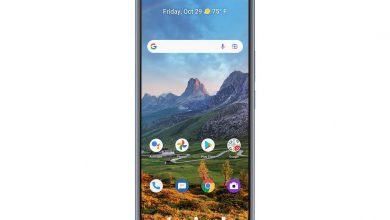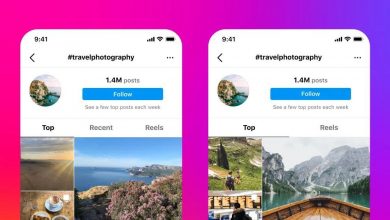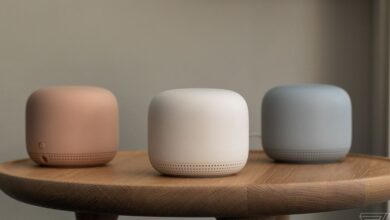How Samsung beefed up its new folding phones: metal, tape, and a dab of goo

I was not expecting Samsung’s third generation of folding phones to be water-resistant.
The new Galaxy Z Fold 3 and Galaxy Z Flip 3 have just as many moving parts as previous generations. Phones have been resistant to spills and short dunks for some time, but folding phones add an entirely new level of complication to waterproofing. There are many more ways for water to get in, and some of those ingress points move.
Samsung’s solutions for sealing up those ports are clever, but they’re above and beyond what Samsung’s folding phones really needed: stronger screens. Samsung says that’s happening, too. In fact, in a call with some of Samsung’s lead engineers, I learned why the company believes these phones are sturdy enough to become mainstream devices.
Samsung has had its share of very public embarrassments. That first Galaxy Fold was canceled before launch because review units broke — sometimes spontaneously, as mine did. And of course, there was the fall of 2016 when Galaxy Note 7 batteries caught fire around the world, seriously threatening people’s safety and leading to a recall.
But the Fold was eventually released after some changes, and more changes still have been applied to this new generation. And the Galaxy Note — and big batteries in Galaxy phones more generally — also eventually made a comeback.
Samsung keeps trying. And it’s going to keep trying with foldables, where it has a significant lead on the competition and intends to keep it. This year, if you put the stronger screen, a more rigid frame, and that water resistance together, you get a story of a third generation of phones that Samsung hopes will finally put the disaster of the original, canceled Galaxy Fold to rest.
:no_upscale()/cdn.vox-cdn.com/uploads/chorus_asset/file/22774800/4.jpg)
There’s no magic secret to making a phone water-resistant. Simply find all the places where water can get in and then seal them — either with glue or rubber gaskets. For a lot of the ingress points on folding phones, you just treat a folding phone as two separate phones. Sealing simple things like speaker holes, USB-C ports, and SIM card slots work exactly the same. Done and done.
But beyond those ingress points, there are complications and the solutions aren’t as straightforward when you’re working with a folding phone. The problem is movement. Specifically, there’s that pesky hinge, an even peskier flexible screen, and the peskiest of all: wires.
:no_upscale()/cdn.vox-cdn.com/uploads/chorus_asset/file/22774936/8.jpg)
:no_upscale()/cdn.vox-cdn.com/uploads/chorus_asset/file/22774812/16.jpg)
:no_upscale()/cdn.vox-cdn.com/uploads/chorus_asset/file/22774939/21.jpg)
There’s simply no way to fully seal the hinge; there are too many moving parts that need to be placed in close proximity. Samsung’s solution for keeping dust out of the mechanism is tiny sets of nylon brushes cut to fit into caps that are less than a millimeter wide. (The company tried both carbon fiber and PET before landing on just using nylon.) It’s not a perfect fix for dust, but it has made a big difference in durability on the second generation of folding phones.
But brushes don’t stop liquid. So Samsung just accepted that and instead “developed a special type of lubricant that can really adhere well to all of the small components in the device,” says Hee-cheul Moon, principal engineer on Samsung’s mechanical team.
:no_upscale()/cdn.vox-cdn.com/uploads/chorus_asset/file/22774945/12.jpg)
:no_upscale()/cdn.vox-cdn.com/uploads/chorus_asset/file/22774948/22.jpg)
All lubricant can wear off, but Samsung believes that its lubricant should be good for 200,000 folds. Samsung even doused it with Coke. To be fair, Samsung makes no claims that either phone will stand up to soda immersion. The Z Fold 3 and Z Flip 3 each are rated for IPX8 water resistance, which means they should be able to survive in 1.5 meters of water for up to 30 minutes. You might be used to seeing IP68 resistance on devices like the iPhone 12 or Galaxy S21, but the “6” is code for a guarantee of dust resistance, which Samsung’s folding phones lack.
As for the screen itself, it’s composed of multiple layers and Samsung simply sealed it up, using what it calls a pressure-sensitive adhesive. So if water gets in, it will literally flow between the screen and the two bodies of the phone, and also get into the hinge. All of that shouldn’t be a problem, Samsung says.
Sealing the two sides of the phone required new materials. On folding phones, the screen needs to float a bit above the body. It has to move just a bit when the body folds and unfolds. (You can see this most clearly on the Moto Razr, which has a screen that visibly slides around.) There are holes in the body of the phone that need to be sealed, and for that Samsung developed a thick, double-sided tape. It’s thick enough to allow the screen to slide just a bit.
That leaves one more problem to solve: the two sides of the phone need to be connected with wires. There is no way a simple rubber gasket around a flexible circuit board would work. Those ribbons need to move quite a bit in all three dimensions. Samsung’s fix is super smart: “cured in place gaskets.”
:no_upscale()/cdn.vox-cdn.com/uploads/chorus_asset/file/22774950/6.jpg)
“When it’s dispensed, it’s in the liquid or fluid format,” says Moon. “Once it’s exposed to air, it becomes solid.” Think of it as a kind of flexible epoxy that sticks to the phone and the ribbon to make a watertight seal but still allows for more movement than a rubber gasket could. It’s goo when it’s first applied in the factory, and cured before assembly is finished.
Is all of this a repairability nightmare? Absolutely. Adhesives are the bane of fixing up phones, and with the Z Fold 3 and Z Flip 3, Samsung has introduced no fewer than three new kinds of sticky materials. Samsung itself offers extended warranty services, and unfortunately, it seems like they might be a very important part of buying these phones — third-party repair shops are going to have a hard time dealing with all that double-sided tape and custom glue.
:no_upscale()/cdn.vox-cdn.com/uploads/chorus_asset/file/22774818/20.jpg)
Samsung’s big innovation with the Z Flip in 2020 was using Ultra Thin Glass in its folding displays. But it was an innovation that was hidden under literal layers of plastic. It might have helped with the screen’s durability and making it feel firmer, but the thing your thumb actually touched on both the Flip and Fold phones was still a piece of mushy plastic. (Plus, some phones began cracking at the hinge after some use.)
This year, Samsung needed to solve those problems, add waterproofing, and tackle one more challenge: make sure that the Z Fold 3 would be able to endure having an S Pen stylus tapping and scritching away at it.
I have no idea if Samsung can really achieve all of those goals — but making the main screen stronger is the most important thing Samsung could do. It’s the part of the phone that’s most fragile and simultaneously the thing you interact with the most.
Samsung says it has rearranged the layers of the screen to improve durability. So now the order is the Wacom digitizer layer for stylus input (on the Z Fold 3 only), then the OLED display itself, then the Ultra Thin Glass, then a protective polymer layer, and finally the topmost layer, a new “Stretchable PET” (Polyethylene terephthalate) screen protector on top.
:no_upscale()/cdn.vox-cdn.com/uploads/chorus_asset/file/22774810/14.jpg)
As with previous folding devices from Samsung, you are absolutely not supposed to remove that topmost layer. Unlike previous folding devices, this new stretchable PET should have fewer “marks of fingerprints and it’s less vulnerable to scratches or dents,” according to Byeng-seok Choi, a senior professional at the Flagship Product Planning Group at Samsung.
:no_upscale()/cdn.vox-cdn.com/uploads/chorus_asset/file/22775301/Screen_Shot_2021_08_10_at_8.09.55_PM.png)
:no_upscale()/cdn.vox-cdn.com/uploads/chorus_asset/file/22775299/Screen_Shot_2021_08_10_at_8.08.34_PM.png)
Choi says that for the Z Fold 3, Samsung has achieved “a panel durability which is 80 percent or more higher than our previous iterations.” (Samsung claims the same improvement for the Z Flip 3.) He also claims that it should feel much more like the plastic screen protectors that are already commonly used on regular phones, “So, I believe that the users won’t notice much difference anyway, because they’ve already experienced this material.”
My colleagues Becca Farsace and Chris Welch had a chance to see the phones in person and did notice that they seemed to be less likely to pick up fingerprints than earlier folding phones.
As for the Wacom digitizer, Samsung didn’t attempt to make that fold. Instead, there are two separate digitizers on each side of the phone. To the OS, it looks like a single panel — and the gap between them is handled by “a new algorithm” to calculate the stylus tip’s position using data from either side.
That all sounds good, but the story is undercut somewhat by Samsung’s solution for using an S Pen with the Z Fold 3. Instead of simply allowing customers to use existing S Pens, Samsung is selling a special version with a retractable tip. The tip of the S Pen now has a “rounded, rubber nib” that’s softer than previous versions. When too much pressure is applied, the tip will retract rather than let a user press too firmly on the screen. It’s a complicated solution that makes it clear there’s still a problem in the first place.
:no_upscale()/cdn.vox-cdn.com/uploads/chorus_asset/file/22774825/27.jpg)
Lastly, Samsung is using a new aluminum alloy it developed, patented, and branded with a new name: Armor Aluminum. Samsung wouldn’t share what exact metals and processes it used to create it, but Sung-ho Cho, principal designer at Samsung’s Advanced Lab, says the company was “able to reinforce the strength by 10 percent or more.”
Samsung showed a brief demo where it knocked a block of its Armor Aluminum up against another block of 7000 series aluminum, which is what’s commonly used on smartphones now. (When a tech company touts “aerospace grade” in its aluminum, it’s usually referring to 7000 series.) The dent on Samsung’s alloy was, as you’d expect, much smaller than the damage to the 7000 series.
Samsung is using this new aluminum for the frames and hinges on the Z Fold 3 and Z Flip 3, but it also plans on using it on more phones going forward.
Cho says that Samsung stuck with aluminum because of its weight but that this more rigid version of it should help with preventing screen cracks on the outside glass. “It provides such a strong and durable skeleton so that it minimizes the impact on other material,” he says. “It kind of acts as a shock buffer between the different materials.”
:no_upscale()/cdn.vox-cdn.com/uploads/chorus_asset/file/22774817/19.jpg)
Samsung isn’t shy about its stated goal for foldables this year: make them mainstream. For the Z Flip 3, it’s finally brought the price under that conceptually important $1,000 price point. For the Z Fold 3, the price is still very high, but with stylus support and an under-screen selfie camera, it can legitimately replace the Note as Samsung’s spec-forward flagship phone.
But price is just one part of what Samsung needs to achieve here. With these durability claims, it’s hoping to remove one more barrier to making these phones feel like normal alternatives to regular glass slabs.
The thing about Samsung is that it’s easy to see when it gets things wrong. The screen fritzes out, the battery starts bulging, or the software gets littered with ads. Samsung gets things wrong all the time — too often, really.
But the other thing about Samsung is that it rarely walks away from an idea it believes in. And year by year, Samsung corrects its mistakes with small iterations that don’t draw much attention but do make the experience better. Until one year, quietly, Samsung gets it right.
The only question left is whether this is the year. And if it’s not, can Samsung figure it out before another company finds a way to create a truly great folding phone?
Related:
Correction: This article previously stated that the Z Flip 3’s screen was 30 percent stronger. Samsung’s claim is 80 percent, the same as the Z Fold 3.
Source link






